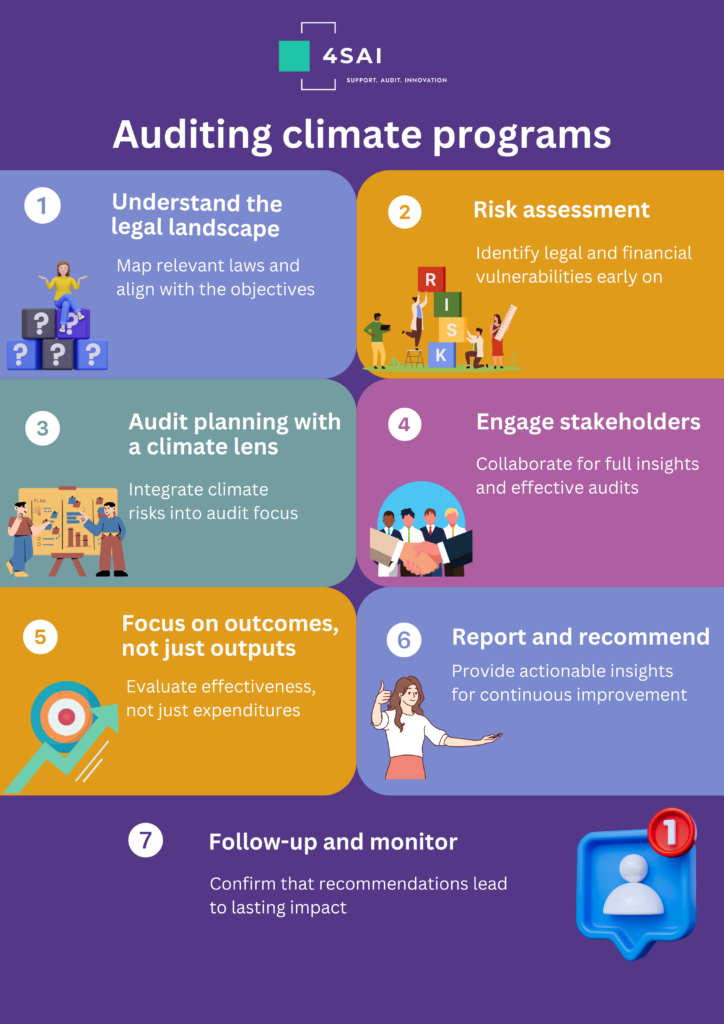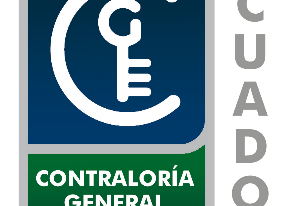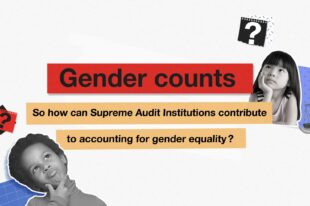Is your climate strategy strong enough? The power of smart spending

Author: Mr. Keith de Jong LL.M MBA ML Managing Director, 4SAI
Introduction
Have you ever wondered what happens when public funds meant to mitigate climate change are not spent wisely? Or how legal compliance in the use of these funds could make or break our efforts to build resilient communities? As auditors, we often find ourselves at the crossroads of these crucial questions. In a world increasingly defined by climate change impacts, the role of Supreme Audit Institutions (SAIs) has never been more vital. We are the guardians of not just accountability but also of ensuring that every dollar and every decision counts toward a sustainable future.
The high stakes of climate change auditing
Imagine this: Public funds are allocated to a climate resilience program, but due to a lack of legal oversight and inefficient spending, the program fails to deliver. The consequences? Vulnerable communities remain exposed to risks, taxpayer money is wasted, and trust in public institutions erodes.
Is there a way to prevent this scenario? Absolutely! The answer lies in strong and resilient auditing practices that emphasize legal compliance and efficiency. But how do we achieve this?
A practical roadmap for SAIs

Let’s explore a practical methodology that SAIs can adopt to ensure public funds related to climate change are used effectively and in full compliance with legal frameworks:
1. Understand the legal landscape
Start by mapping out the relevant legal frameworks governing climate change programs. This involves not just national laws but also international agreements and regulations. Ask yourself: Are the laws clear and aligned with the program’s objectives? Do they provide a solid foundation for accountability?
2. Risk assessment
Conduct a thorough risk assessment focusing on legal and financial vulnerabilities. This step is crucial. Consider what are the potential risks of non-compliance? How might inefficient spending amplify the impacts of climate change? Identifying these risks early allows us to direct our auditing efforts where they are needed most.
3. Audit planning with a climate lens
Integrate climate change considerations into your audit planning. This means going beyond traditional audits. Reflect on questions like: How is the program addressing the specific climate risks it was designed to mitigate? Is there evidence that funds are being spent in ways that enhances resilience?
4. Engage stakeholders
Collaboration is key. Engage with stakeholders like government agencies, NGOs and community leaders to gather insights and build a full picture of the program’s effectiveness. Think about it: How can these perspectives enhance the audit’s findings and recommendations? What can we learn from those on the ground?
5. Focus on outcomes, not just outputs
Shift your audit focus from simply tracking whether funds were spent (outputs) to evaluating whether the spending led to desired outcomes. Ask: Did the expenditure achieve its intended impact in terms of climate resilience? How can this be measured? This approach secures that we are not just auditing for compliance, but also for effectiveness.
6. Report and recommend
Your audit report should be more than a compliance check—it should offer actionable recommendations. Consider how your findings can drive improvements. What best practices can be shared? How can lessons learned be applied to future programs? Remember, our goal is to encourage continuous improvement.
7. Follow-up and monitor
Audits should not end with a report (!). Implement a follow-up mechanism to safeguard that recommendations are acted upon. Ask yourself: Are changes being made? Is there evidence of improvement? Continuous monitoring ensures that our work has a lasting impact.
I would be remiss if I failed to mention the ClimateScanner initiative, a groundbreaking effort that provides SAIs with a tool to assess and compare climate-related governance and performance across different countries. The ClimateScanner exposes areas where improvement is needed and provides invaluable insights into how public funds are being managed in the fight against climate change. Integrating this initiative into our auditing processes means we create the possibility to track progress, increase accountability, and ultimately drive more effective climate action globally.
Conclusion
As auditors, we stand at the forefront of making sure that public funds dedicated to combat climate change are spent wisely and legally. The stakes are incredibly high—our audits can shape the effectiveness of climate resilience efforts worldwide. I believe that following this roadmap (or your own similar roadmap), we can seriously increase our role as stewards of public trust, and secure that every dollar (or any other currency for that matter) is used to build a more sustainable and resilient future.
So, the next time you embark on an audit of a climate change program, ask yourself: Are we doing everything we can to safeguard legal compliance and efficient spending? The answers could make all the difference.
About the Author: Mr. Keith de Jong (LL.M MBA ML) is an accredited public performance auditor and Managing Director at 4SAI, an advisory firm dedicated to providing expertise to Supreme Audit Institutions internationally, helping them enhance their oversight and governance capabilities and meeting global standards of accountability and transparency.





